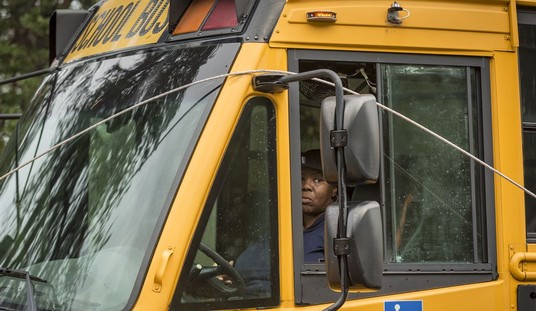The battle for the hearts and minds of Americans over the future of public education, of its very existence, rages. There is, however, one issue on which just about anyone concerned about education can agree. It’s an issue that actually affects every student in America, and a real problem that can be fixed on the local level without state or federal involvement. It’s also an unexpected, nearly invisible, problem: rapidly diminishing class time.
Teachers’ most valuable commodity is time, yet each year state and federally required testing, mandates, and data production add increasing demands on their time, as do other demands. Students are getting much less opportunity for learning than most realize.
Imagine Anytown High School, which has a state-mandated school year of 185 days (37 weeks). Its school day begins at 8:00 a.m. and ends at 3:30 p.m. Eight classes are scheduled, plus two half-hour lunch periods, and each teacher teaches seven classes each day and has one period — about 50 minutes — as a conference/planning period. The school works on a six-week grading schedule with three more-or-less equal six weeks in each of two semesters.
At AHS, five minutes are taken from every class to establish an extra study hall period of about 30 minutes for extra instruction with hopes of raising state test scores. The math: 5 minutes x 185 days = 925 minutes per year. Divide that by 45 minutes (the time remaining for each class period) and that’s 20.6 days per year. Remaining class days: 185 – 21 = 164.
AHS has an optional class schedule that removes five minutes from each class to create an assembly period for pep rallies, assemblies, and other diversions. Let’s say there are 25 of these a year (a conservative figure). The math: 5 minutes x 25 days = 125 minutes per year. Divide that by 45 minutes, and that’s 2.8 lost class days per year. Total: 164 – 3 = 161 days. When these assemblies run long — as they often do — additional class time is lost.
State testing mandates cost about 20% of the AHS school year: 37 lost days. The estimate comes from Thomas Ratliff of the Texas State Board of Education. There’s a link to his original article in my recent series on problems and solutions in contemporary education (click here for the entire series).
The math: 161 – 37 = 124 days remaining.
Anxious about state test results, the school board has imposed internal testing mandates. “Benchmark” tests are required one day per six weeks for each discipline tested by the state. The math: 124 – 6 = 118 days remaining. AHS students have only 64% of the school year available for the possibility of learning something other than how to pass high-stakes tests or how to cheer at pep rallies and to sit through assemblies.
But that’s not all. The state mandates the daily recitation of the Pledge of Allegiance, the state pledge, and a “moment of silence.” AHS also reads announcements at the same time. This takes five minutes per day from first period. This amounts to 21 days per school year, so on top of the 66 days already lost, every student will lose 21 additional class periods from their first period classes. That reduces their learning opportunities for first period classes to only 98 days, or only 53% of the school year.
AHS, like most schools, offers the full range of sports. Students playing a single sport have the opportunity to be out of school for away games on at least six days. Their learning days are down to 113 (61%). If they play three sports, they’ll probably miss 20 days, so their learning opportunity is down to just 99 days (54%) for six of their classes and 77 days (42%) for their first period class.
A student absent due to illness or for other legitimate reasons eight days during the year is down to 111 days, 60% of the available school year. This doesn’t include out-of-class disciplinary placements, students being called to the office or to counselors for any one of 100 hundred reasons, going to the nurse, medical appointments, shopping, family vacations, or a multitude of other disruptions. This also doesn’t include hundreds of yearly interruptions to classes by announcements about events and activities, bus route changes, and similar issues that may take only a minute but can cost three minutes while the teacher restores order and focus.
It is possible for substantial portions of the AHS student body to have less than 50% of 185 days available for actual learning.
Even students who aren’t discipline problems and who are not involved in sports, music, or other activities may have the opportunity to attend only between 54% and 64% of their classes where something other than learning how to take mandated tests is being presented.
Demands on class time come from within schools and from the community. All manner of groups covet large, captive audiences of students: abstinence organizations, sex-ed organizations, anti-drug organizations, Christian strong men, political groups. Internal pressures can be even harder to resist: clubs that want to put on fundraisers like powder-puff football games, theater departments that want to put on plays, choir and band performances, and many more. When one internal or external group is allowed to take class time, how can others be denied?
Some have suggested lengthening the school year, but would that actually result in more learning opportunities? With the best intentions, most schools are wiping away as much as 56% or more of the opportunity to learn anything meaningful, even more in some cases.
Some kids will do well no matter how much class time they miss, but even they will miss an enormous amount of information and growth. There simply won’t be time to present it to them. They’ll read less, write less, and develop more slowly, and these are the kids in honors classes.
What about those kids that aren’t as focused, that aren’t as smart? What they learn in high school may be the sum of their formal education, and 54% and more of that opportunity is being wiped away in the name of “accountability” and for a multitude of other activities and programs.
In many ways, our schools are very much like our federal government. They’ve taken on far too many tasks and diversions unrelated to their actual mission: providing the best opportunity for learning that their resources and abilities can manage. The more they take on, the more constituencies are created demanding that those activities continue and expand. The more testing they do, the more testing must be done to produce even more data to prove the validity of the testing. More money spent on these distractions means more political power is created, and then more money is spent.
The testing craze is not only materially contributing to the bankrupting of our states and schools, it’s killing 20% — in many places, much more — of each school year. While it’s true that local schools can’t ignore state and federal testing mandates, they do have substantial control over other matters. Ensuring that students spend the maximum amount of time in their classes is a logical, necessary first step in any “reform” scheme. Parents in each and every school district in the nation do have the power to deal with this, if they are aware and interested.









Join the conversation as a VIP Member